Although selection may always be at the core of DJing, technology also plays a large part in how they practice their craft. Here we look at eight exciting new pieces of technology that are redefining the future of DJing.
______________________________
Guest post by Scott Parsons from Landr
DJ technology has come a long way. The heart and soul of DJing is selecting. And it always will be. But when it comes to the future of DJing, selecting is only half the story.
The side of the story is what you DJ on and how you play those tracks back.
LANDR just launched Stems mastering for DJs everywhere. Which got us thinking about the bright future of DJ technology.
So we took a look at some of the newest and best DJ tools out there to give you a picture of what’s redefining DJing right now…Here’s the most exciting new DJ tech available to curious selectors everywhere.
1. Stems
These days, most DJing innovations are hardware based. The actual audio formats haven’t changed much. It’s still Vinyl, CDs and MP3s right?
But Native instruments changed all of that with the introduction of the Stems format.

Stems is an open file format that allows DJs to play, layer and rearrange independent parts of a track. A Stem file contains a track split into four musical elements, like drums, bass, melody and voice.
DJs can manipulate and layer the bass line of one track, the vocals from another and the leads from a third. Or any other combination you can think of.
It’s a new DJing format that brings all the best parts of production into a live DJ setting—like creating new drops, breakdowns and acapellas live in the booth.
The trend of DJs also producing has never been stronger. The Stems format acknowledges that intersection of disciplines and folds them into an entirely new way to play.
What’s awesome about Stems:
- Stems is an open file format so they’re compatible across all kinds of gear
- NI offers a whole line of controllers that are Stems compatible and built to do some seriously mind bending things
- Stems lets the growing number of producers who are also DJs take their studio science into a live setting
- Being able to manipulate and remix certain layers of tracks gives tracks a life way beyond their initial release date
2. Traktor Kontrol S8
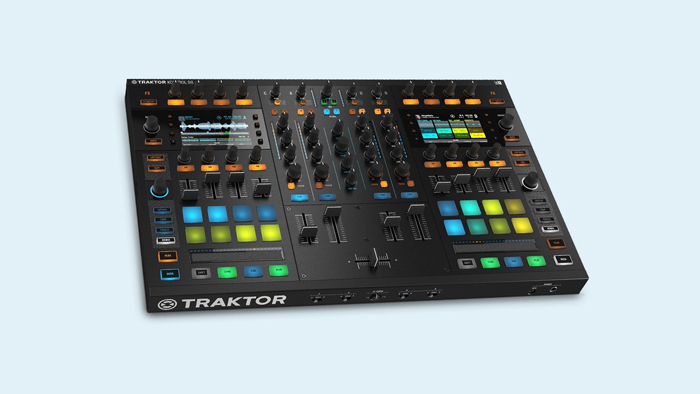
Most DJ controllers still riff on the classic 2 turntable setup. But the Traktor Kontrol S8 has set aside the traditional ‘wheels of steel’ setup and pushed DJing into a whole new realm of creation.
The Kontrol S8 shines the hardest when playing Stems.
The S8 is four decks in one sleek unit with four assignable remix slots, dedicated faders for each Stems element (bass, drums, synth, vox etc.), and a built in 4 track display for referencing your Stems and cue points.
But it’s not just a standalone unit either. It’s fully linkable with CDJs, turntables and other controllers, and acts as a mixer for everything connected.
Plus, the Kontrol S8 is plug-and-play ready to use with the TRAKTOR SCRATCH PRO software.
DJ Shiftee gives a spot on demo of some of the things that are possible with the S8.
What’s awesome about the Kontrol S8:
- Useful as a stand-alone mixer or a plug-and-play TRAKTOR SCRATCH PRO controller
- Mix together tracks, samples and Stems for a dynamic performance that goes way beyond just pushing play
- Touch-sensitive knobs that feel amazing (seriously they feel good. Very important!).
- LED controlled touch strips for tactile effects control in the live and studio setting
3. MODEL 1
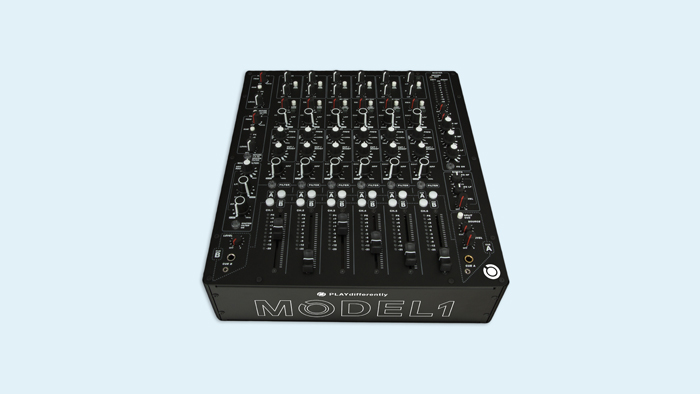
The MODEL 1 mixer was designed by Richie Hawtin and Andy Rigby Jones, former lead designer at Allen & Heath.
They’re two of the most qualified people to make a top-notch mixer: a world-class DJ with decades of experience, and the designer behind the industry’s best mixers.
Clubs put a lot of work in their soundsystems. The DJ’s job is to deliver the best sound through their tracks and gear.
The MODEL 1 gives DJs everything they need to deliver—2 aux sends, dual headphone ports and cueing for back-to-back sets, high-pass and low-pass filters based on rotary mixers and precision sculpting EQs for cutting and boosting.
The Model 1 also doubles as a capable studio mixer as well making it a versatile tool for the emerging community of DJs that also produce.
“The mixer is a DJ’s main instrument. Whatever you play—laptop or turntables—it all has to go through a mixer.” — Richie Hawtin at MUTEK.
What’s awesome about the MODEL 1:
- Completely analog, top quality sound
- First DJ mixer that isn’t a DJ mixer. It’s on par with high quality studio mixing consoles—especially great for artists who do both DJing and live instrumentation (or both at once).
- Overdrive on each channel for extra crunch
- 2 headphone outputs for seamless b2b sets
4. Roland DJ-808
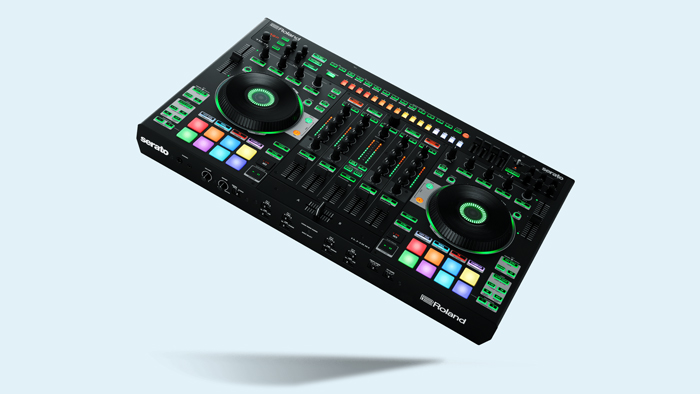
The Roland TR-808 drum machine is iconic. Legendary DJs like Frankie Knuckles basically invented house music by adding 808 drums on top of disco records.
So it’s no surprise that Roland’s new DJ-808 has that history at its core. It’s a 4-track DJ mixer with a built in sequencer that adds Roland’s recent TR-8 drum machine right inside the same unit.
It even has vocal processing and advanced Serato integration to give DJs a whole set of tools for playing and producing live. That means it’s fully compatible with Serato’s long list of powerful DJ gear and software.
When the gig is over the DJ-808 serves as a capable studio tool as well:
Make a loop with the decks, put a drum beat under it with the onboard drum sounds from Roland’s iconic line of drum machines, and you’re well on your way to a fully built track.
The trend towards blurring the boundaries between DJing and live is here to stay. The DJ-808 is certainly a part of that trend and a great place to start experimenting.
What’s awesome about the DJ-808:
- Overlay iconic drum sounds on top of any track in a DJ set in sync with your entire performance
- Use the Voice Transformer to pitch your voice and match the key of the track playing in Serato
- High-fi audio quality: 24 bits/96kHz
- Sync with any other electronic instruments or AIRA gear
5. Ableton Live 9
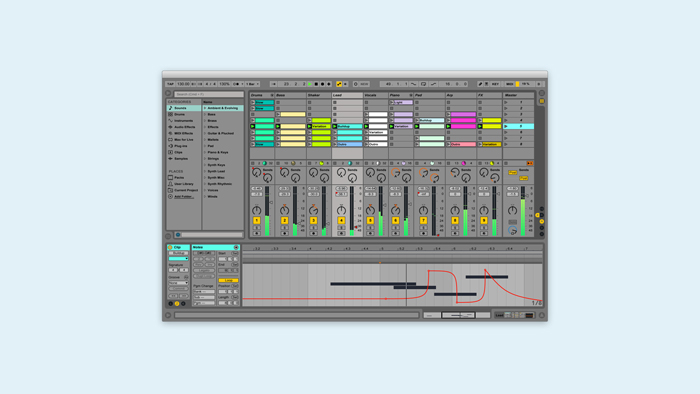
Ableton isn’t just a DJing software, nor is it just a DAW. You might be thinking that Ableton is hardly new. But the truth is, Ableton is so limitless that it’s still a huge part of the future as well.
Many producers already use Ableton Live in the studio. So it only makes sense that many opt for Ableton as a DJ software as well. Not everybody DJs with decks.
Ableton’s compatibility with gear, standalone functionality, and fluid interface has made audio creation accessible to everyone.
The warp function, clip launching and compatible Ableton Push hardware have merged production and DJing (notice a trend yet?) into a tool that sits at the core of a ton of artists performance and production workflows.
What’s awesome about Ableton Live 9:
- Compatible with pretty much everything
- Infinite possibilities for mixing samples, tracks, original productions, etc.
- An all-in-one: Everything from production, to DJing to sound editing and mixing is possible
- Accessible to all creators regardless of skill level or genre
6. Toraiz SP-16
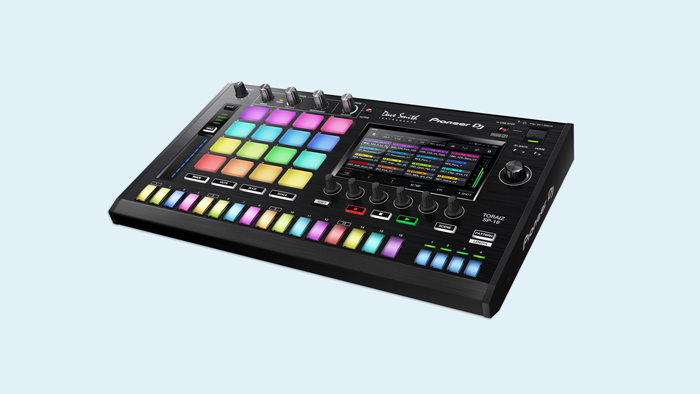
The Toraiz SP-16 may look like a drum machine and sequencer you’d see in the studio for producing. And it is.
But with a few clever features, Dave Smith has turned this unit into a seriously powerful DJ tool as well.
The Toraiz SP-16 is indeed a sampler, sequencer and workstation for building your own tracks.
But what makes it unique for the DJ is its compatibility with CDJs and other compatible DJ controllers. Using its intuitive syncing feature, the Toraiz can playback all your samples, clips and sequences in sync with a connected DJ controller.
The result is a machine that blends studio technology with a live DJ setting. Anything that blurs the lines between the studio and the stage, and pushes the envelope for what playing live can be, deserves attention.
What’s awesome about Toraiz SP-16:
- Seamless workflow between sampling, sequencing and DJing with Pioneer DJ controller compatibility
- Use it with a computer or as a standalone sampler, sequencer and DJ controller
- The TORAIZ SP-16 has the same analogue filters as Dave Smith’s iconic Prophet-6 synth
7. Rekord Box
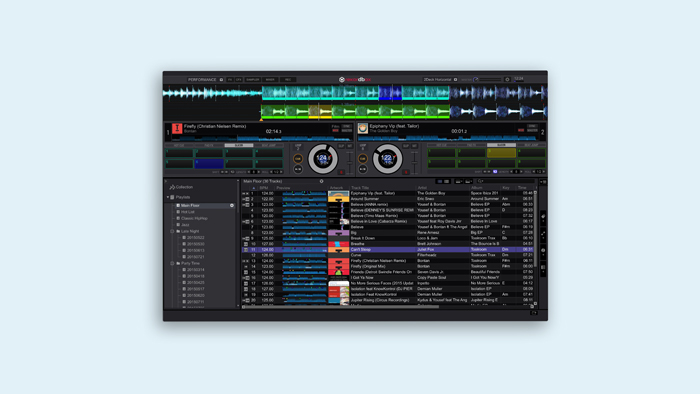
RekordBox isn’t new—but I put it here because it’ll change your DJ life if you haven’t used it yet. RekordBox is the digital version of writing all the BPMs and song keys on your vinyl sleeves.
It lets you analyze tracks (bpm, key, etc.), save hot cues, and manage playlists before, during and after your gig.
RekordBox is a natural extension of Pioneers line of CDJs and controllers that have also had a major impact on the way DJs play. Together with RekordBox, their line of hardware has opened up a bridge between the digital future of music and the turntable tradition that came before it.
RekordBox is also free—making it an accessible option for DJs of all persuasions.
What’s awesome about RekordBox:
- Rekordbox analyzes your tracks precisely and keeps you prepared for your gigs
- Allows you to prepare hot cues and loops in advance of playing
- Stay in key and in sync with RekordBox’s track analyzation
- Managing playlists and reviewing your set is easy and simple even after the gig is over
8. Akai MPC Live
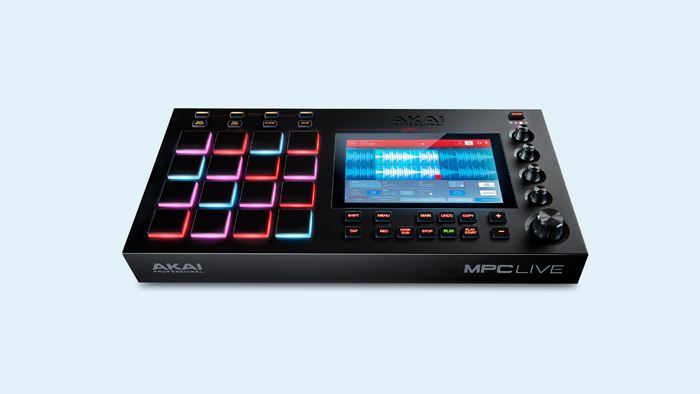
The MPC is a common site in bedroom studios everywhere. It’s 28 year history has established it as a go-to for beatmakers and producers across many genres.
Which is why you might not think ‘DJing’ when you see one. But the MPC Livechanges all that.
The recently released unit from Akai take all the functionality of yesterday’s MPC and packs them into a portable controller for playing live. The iconic 16 pad grid is still there for launching clips, loops and one shots.
But where the MPC Live really becomes a live tool is the standalone capabilities— allowing it to function as an all-in-one instrument for playing live.
The 2.o software allows you do play out your entire live set without the need of a computer. Extended functionality on the classic assignable Q-link sliders, encoders and 7″ touch screen gives performers tools to create on the fly in any live setting.
What’s awesome about the MPC Live:
- Standalone beat station that works without the help of a computer
- Compact and portable design makes it perfect for travelling and fits the habits of DJs that also produce
- Compatibility with DAW workflows, like MIDI drag and drop, make it simple for producing quickly and efficiently
- Useful on stage as an all in one controller, or in the studio as a fully capable studio hub
Turn The Page
So what’s common among all of this new tech? Well, it’s a healthy trend that’s been pretty obvious in DJing for awhile now: The blurring of boundaries between producing, DJing, and playing live.
Most of the emerging tools for DJs blend the studio with stage and invite a live instrumentation element into DJing. It’s a pretty obvious next step because of the huge crossover between DJing and producing in the studio that many DJs are already benefiting from.
But new technologies mean new possibilities. The only way to continue the evolution of craft is to push the tools to their max.
These new technologies for DJs are still clay—waiting to be moulded, twisted and formed into new sounds.
Think we missed something? Let us know what your thoughts on on DJing tech. We’d love to hear what you think about the future.
What’s next? That’s yet to be seen. But as you can see, there’s no shortage of opportunities for you to push DJing into a new space.